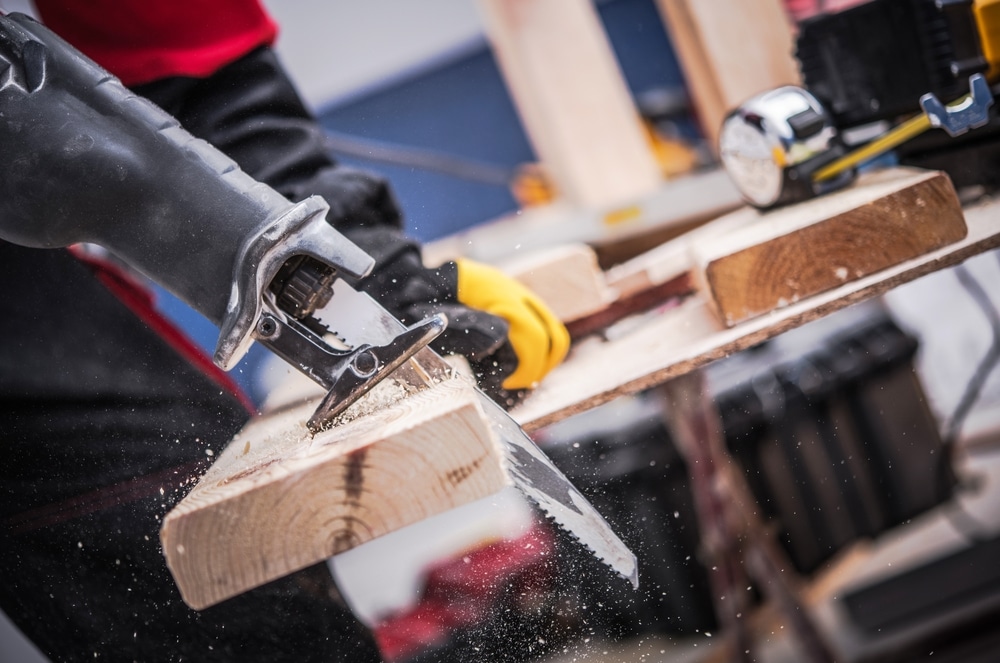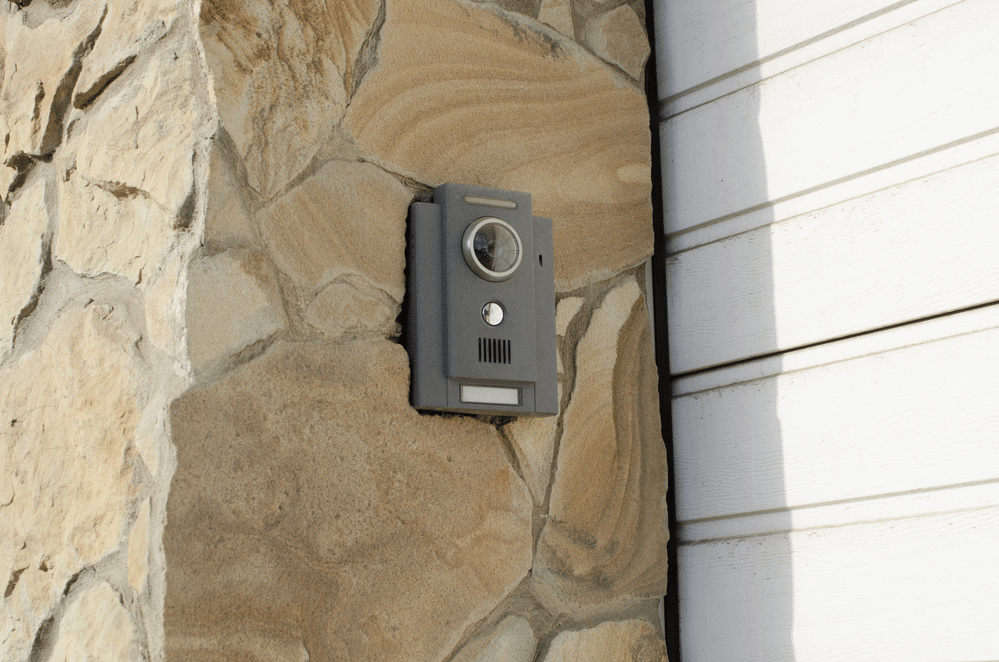Last Updated on
A reciprocating saw can be used in many ways, but you may not think this saw will be the ideal solution for precise cuts. Instead, you’ll quickly learn that a reciprocating saw is best used for tasks that often require a little less finesse and more brutality.
However, that’s not a bad thing. Instead, the blade on the reciprocating saw will perform some very specific jobs, and you will be more than happy that you have it on your side. So if you have been wondering, “what can I use a reciprocating saw for” here’s everything you need to know.
The Basic Idea of a Reciprocating Saw
Reciprocating saws are most suited for demolition work, though you can also use them to prune trees.
You can purchase cordless reciprocating saws as well as corded versions. However, we recommend thinking about the cordless version, as it makes life a whole lot easier for you.
But what about the ways in which you can use this saw? Well, there are a few.
Starting With Demolition Work
Just before describing some specifics, you should be aware that reciprocating saws are used more for demolition work of some kind and cutting through tough materials. They are one of the most versatile tools out there, thanks to the variety of blades on offer, and that’s why they are so superior to other saws.
So, what are some of the specific tasks that can be completed with a cordless reciprocating saw?
The Materials
What you will quickly learn with this tool is that the blade is key. When you have the correct blade in place, it means you can cut through various materials with ease.
The most considerate tool is the Reciprocating Saw
— Tony Corsentino (@corsent) July 7, 2021
The most common materials that you will perhaps cut with a reciprocating saw will include.
- Wood
- Metal
- Ceramic tile
- Plasterboard
- Trees
- Pipes
- PVC
As you can imagine, this opens up some real possibilities with your reciprocating saw. When you then consider the size and flexibility of the tool, it shows how construction people use it even in tight crawl spaces, thanks to its versatility.
How It Works
Plus, just a quick note on how a reciprocating saw works.
It cuts using a back-and-forth motion, and that is the key with a reciprocating saw. It’s safe to use as long as you have closed off the blade clamp, as this machine uses so much power that you need to know that blade is secure.
You hold the reciprocating saw in two hands, which is the same as most other saws, but the reciprocating saw should be held with one hand behind the chuck and the other on the trigger.
Doing this, it reduces vibration, and that gives you more control over the tool. Remember that the likes of wood or any other material will shake as you cut it, which is especially true when you are using a reciprocating saw.
Cutting Walls
A reciprocating saw will be the perfect tool for cutting walls, and it can do so better than any other power tool out there. The coarse blade for cutting through plasterboard makes quick work of the job in hand, and that also applies if you are planning on cutting a section from a ceiling.
With this, you need to drill a hole in the material to get started. Then, reciprocating saws will cut through, and down the line you made in seconds.
Feeling a little better today so I decided to trim my wife’s cane. It’s a lovely piece but it’s just a tad bit too tall for her.
— Miranda 🏳️⚧️ (@MirandaRosalise) April 28, 2021
Nothing a good appointment with the reciprocating saw can’t fix pic.twitter.com/bunoyh94PR
Cutting Metal Pipes
With the correct blade in place, reciprocating saws can cut through metal pipes, so if you are doing some plumbing work, this could come in handy. It’s perhaps the best tool for this job, as the blades specifically designed for cutting metal via a reciprocating saw are vastly different to most saws.
Cutting Joists
A reciprocating saw is going to make quick work of cutting through joists. This is partly due to the blade and the design of the saw, which means it’s perfect for working in tight spaces. With the angle of the blade and the way it can be held, as well as the pivoting shoe keeping you on track, cutting those joists in your construction projects will become a breeze.
Pruning Trees
Even pruning trees is going to be a whole lot easier with a reciprocating saw. Trying to get into branches to cut them can be difficult with a normal saw, whereas the blades here will make quick work of it all.
Cutting Nails
As the blades can cut metal, it stands to reason that the saw can be used for removing nails embedded in a material. It does quick work to get through those nails and does a better job than a power drill where people try to drill them out.
Cutting PVC
Blades can be interchanged in a reciprocating saw, and that’s why you can also use this tool to cut PVC as well as metal pipes.
The saw will slice through, but keep in mind that this task may be better with a variable speed saw, thanks to the control aspect.
My first chainsaw and reciprocating saw 🙌 I’m left handed and awkwardly uncoordinated but I’m still super excited about working out how to use them 💕🙌💕 pic.twitter.com/DUTBfjTe2f
— Jones, Julia (@juliajones110) June 6, 2021
Cutting Door Frames
The wood on the door frames needs to be removed if you are changing the door. This saw will get through the wood no matter the angle and allow you to then prize the sections off with ease.
Cutting Window Facings
As with the door frames, reciprocating saws can remove window facings if you are changing them in a DIY project. It is all about getting the correct blade for the right job, but you will notice glazing companies using reciprocating saws regularly.
Types of Cut
The list of ways in which you can use a reciprocating saw is continual, but we need to look at the cuts that are involved as well.
Teaching someone how to use a reciprocating saw is just as exciting as using one.
— Kerry 🌺 (@whatbabytalk) April 23, 2021
Plunge Cut
A plunge cut is going to make quick work of plasterboard. You drill a hole to start you off before then inserting the blade of the saw into the material and resting the shoe against it. Then, you tilt the reciprocating saw to an angle of at least 30 degrees and start that saw up. These tools are designed to then cut down with the teeth ripping through the plasterboard with ease.
Curved Cuts
Curved cuts are also possible with a reciprocating saw, and that means it can be used to cut shapes even though they may not be the finished cut.
It applies to not only wood but also metal and even ceramic tile. The key here is to mark your lines that are to be cut and then install the correct reciprocating saw blade for the job.
Demolition Work Made Easy
So, what can I use a reciprocating saw for? As you see, there are various uses for reciprocating saws. The best approach should you wish to own this saw is to make sure you can change the reciprocating saw blade to fit your needs. Having the right blade will make a huge difference.
This is one of those tools where you wonder why you need it at first, but then as soon as you experience what it’s capable of, it completely changes the game. So, from tree branches to DIY projects, this tool is going to have you covered.
Paul is the type of person who never met a problem he couldn’t fix. He can always be found tinkering with something in his house, even if it isn’t broken! His tips and tricks are often shared on our site. He’s the one you call when something breaks because he has been known to improvise fixes for everything from leaky faucets to malfunctioning dryers.



